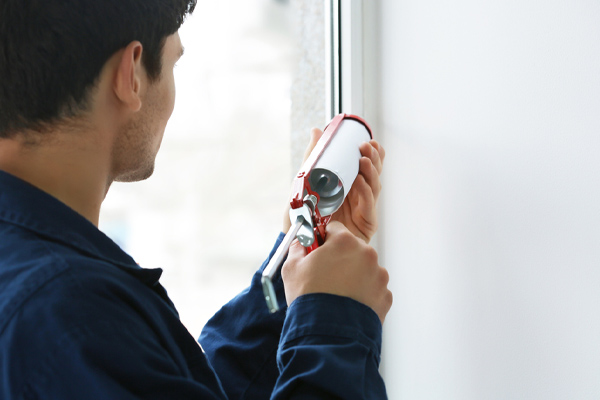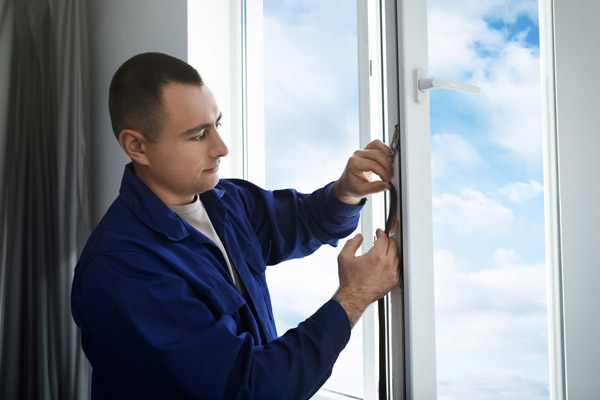The Importance Of Home Air Sealing On Your Energy Costs

Home air sealing is a game-changer for residents regarding slashing energy costs and enhancing indoor air quality. Gaps and cracks that let conditioned air slip away can strain your heating and cooling units unnecessarily, leading them to consume excess energy to achieve the desired warmth or coolness.
The silver lining? By addressing these air leaks, homeowners will see a noticeable dip in their energy expenses and extend the longevity of their HVAC units. Moreover, a well-sealed home acts as a barrier against outdoor contaminants, allergens, and even unwanted critters, elevating the air quality and fostering a healthier living environment. Sealing your home effectively is a strategic move for both your pocket and well-being.
Understanding the Significance of Home Air Sealing for Optimal Energy Savings
Contents
McAllister Energy is here to guide you through the nuances of air sealing, elucidating its critical role in home energy conservation and overall indoor comfort.
Related Article: 5 Reasons Your Boiler Is Leaking
Understanding Home Air Sealing

At its core, air sealing is about eliminating those sneaky openings throughout your home that allow conditioned air to escape—think of it as fortifying your home’s protective shell. This protective shell, commonly known as the building envelope, encompasses walls, ceilings, floors, windows, doors, and any other spaces where unwanted air might find its way inside.
But why is home air sealing so crucial? Here are two primary benefits:
- Boosting Energy Efficiency: When conditioned air isn’t leaking out, your HVAC system doesn’t have to labor as hard, leading to more efficient energy usage and less wear and tear.
- Elevating Indoor Air Quality: By sealing those gaps, you’re keeping out not just the cold or heat but also potential allergens, pollutants, and contaminants, ensuring the air inside remains fresh and clean.
Key zones often needing this sealing touch are around windows and doors, the foundation perimeter, rim joists, electrical outlets, switch plates, and spaces like attics or crawl areas.
One can employ various materials to effectively air seal, from caulks and weatherstripping to foam sealants and specific tapes. Consulting with a professional energy auditor or a skilled contractor is invaluable if you’re unsure where to start. They can pinpoint those lesser-known leak-prone areas and advise on the most suitable materials and techniques for maximum sealing efficiency. At McAllister Energy, we always prioritize helping our customers achieve the most comfortable and efficient home environment.
The Multifaceted Benefits of Home Air Sealing
When it comes to enhancing your living space, air sealing stands out as a decision packed with many advantages. Here’s a closer look at its transformative impact:
- Optimized Energy Efficiency: One of the most immediate and tangible benefits of air sealing is its positive impact on energy consumption. By preventing the unnecessary escape of conditioned air, your HVAC system won’t have to compensate as much, which translates to diminished energy bills and heightened efficiency.
- Consistent Indoor Ambience: No more sporadic cold gusts or unwelcome drafts! Air sealing ensures that your indoor environment remains stable, offering you a uniform, cozy space throughout.
- Pristine Indoor Air: Think of air sealing as a protective shield, keeping out various outdoor contaminants. This barrier ensures that the air inside is free from allergens and pollutants.
- Peaceful Living Environment: You get the gift of silence along with fresh air. A well-sealed home acts as a buffer against the hustle and bustle of the outside world, allowing you to enjoy a quieter indoor space.
- Boosted Home Longevity: Air sealing does more than keep the air in; it plays a pivotal role in safeguarding your home’s integrity. It mitigates moisture accumulation risks by halting air leaks, which can be the precursor to mold formation and potential structural compromises over the years.
Related Article: The Importance Of Ductwork Design
Where Your Home Might Be Leaking Air
To make the most out of air sealing, it’s essential to first identify the areas where your home is most prone to air leaks. Here’s a closer examination of the usual suspects:
- Windows and Doors: These are primary entry and exit points for air. Even the tiniest gaps around them can lead to noticeable drafts and energy inefficiency
- Attic and Roof: Small crevices, openings, or even unnoticed damage in these areas can be a source of significant energy loss. Moreover, they can become potential spots for moisture accumulation, inviting other related problems.
- Electrical Outlets and Switches: Often overlooked, these installations can harbor tiny gaps in your walls, permitting air to flow in and out unchecked.
- Baseboards and Crown Molding: The junction between these decorative elements and your walls might hold gaps that permit air infiltration, resulting in energy wastage and unwelcome drafts.
- Ductwork: If your ducts aren’t airtight, you’re likely losing some of that conditioned air you’re paying to heat or cool, thereby compromising the performance of your HVAC system.
- Plumbing and Wiring Penetrations: Areas where plumbing lines or wiring enter or exit your home can be hotspots for air leakage, especially if not sealed properly.
- Chimney and Fireplace: The romantic appeal of a fireplace comes with a practical concern. Any gaps or flaws in the flue or around the fireplace structure can lead to substantial energy leakage.
Engaging with a professional energy auditor or a contractor for a comprehensive evaluation, like a blower door test, can be invaluable. Not only will they accurately pinpoint these areas of concern, but they will also recommend the most effective sealing methods tailored to your home’s unique needs. Remember, knowing where to seal is the key to effective air sealing.
Related Article: Three HVAC Problems That You Should Pay Attention To
Identifying Air Leaks in Your Residence
Enhancing energy efficiency in your residence starts with pinpointing and addressing potential air leaks. Addressing these leaks can lead to significant savings on heating and cooling expenses. Here are structured strategies to effectively detect air leaks in your residence:
- Inspect Doors and Windows: Examine all doors and windows for visible gaps or fissures. Utilize a flame from a candle or lighter, placing it close to the door or window edges. If the flame demonstrates any flickering, it indicates a possible draft.
- Evaluate Outlets and Switches: Position a flame near the outlets and switches, particularly those on exterior walls. Flickering here may be indicative of air infiltration.
- Scrutinize the Attic and Basement: Direct your attention to the attic and basement, focusing especially on regions where there’s penetration from pipes or vents through walls or ceilings.
- Assess Ducts and Vents: Consider getting a comprehensive assessment of your ductwork for any leaks, unintended openings, or unsecured joints. Ensure your HVAC specialist also evaluates the vent peripheries for any discrepancies.
- Employ a Smoke Pencil: This tool, a smoke pencil, when activated, emits a discernible smoke trail, highlighting drafts by showing the smoke’s movement direction.
- Consider a Blower Door Test: This sophisticated test uses specialized equipment to depressurize your residence and then gauge the volume of infiltrating air, thereby ascertaining the location and magnitude of the leaks.
- Consult a Professional: For an in-depth analysis and optimal results, consider engaging an expert to conduct a comprehensive energy audit of your residence. Leveraging advanced tools, they can pinpoint leaks with precision and provide tailored recommendations to bolster energy efficiency.
Related Article: How Much Ventilation Does A Home Need?
Wrapping Up: The Undeniable Value of Home Air Sealing
The journey of ensuring a cozy, energy-efficient living space undeniably commences with proper home air sealing. Bringing a professional on board for this task isn’t just a suggestion—it’s a wise choice. Equipped with the right tools and experience, they ensure precision in every seal, ensuring no corner is overlooked.
Engaging with a professional offers peace of mind—you’re assured of impeccable work quality and the benefit of immediate tangible results in the form of a comfortable living environment. While there’s an upfront cost, think of it as an investment. Over time, the reduced energy bills and enhanced indoor air quality will prove their worth, reflecting not just in monetary savings but also in your household’s improved health and happiness. In essence, the return on investment from professional air sealing is immediate and long-lasting.
Related Article: Important Features of a Solid HVAC Warranty
Call McAllister Energy for Comprehensive HVAC Solutions

When it comes to top-tier heating and cooling services in Southern New Jersey, McAllister Energy stands unparalleled. With a team of certified technicians possessing a deep mastery of HVAC tasks— tune-ups, installations, repairs, replacements, or more—you’re entrusting your system to the best in the business.
As New Jersey’s premier HVAC service provider, our commitment to excellence shines in every project. We pride ourselves on delivering the optimal balance of superior service, affordability, and unmatched quality. Enhancing your home’s comfort, boosting its energy efficiency, and ensuring cost savings on HVAC-related expenses are just a few advantages our services bring.
Whether you’re looking for the perfect HVAC solution for your residential space or a commercial establishment, our experts will tailor their recommendations to fit your needs and budget seamlessly. With a promise of 100% satisfaction, you can be assured of impeccable service every time.
Schedule your service appointment with McAllister Energy today and experience the gold standard of HVAC services.
You can click here to contact us now or call us at (856) 665-4545 to find out more! Click the link to view our service area.